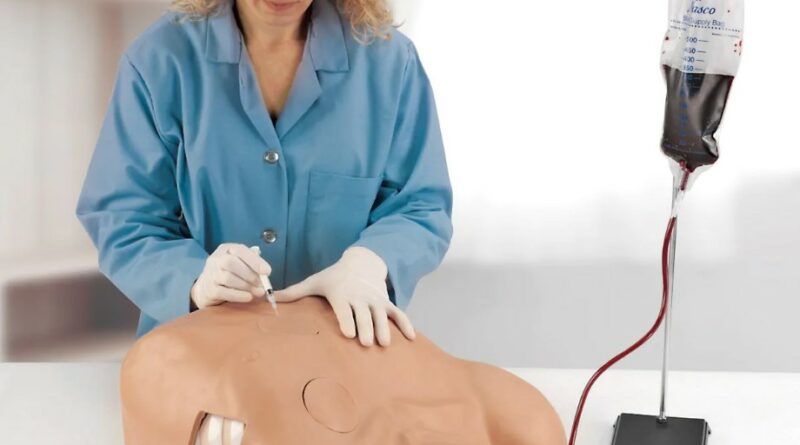10 Benefits of Pericardiocentesis Simulators in Medical School Education
Carrying out the pericardiocentesis procedures is one of the most important skills for medical professionals, especially for those who take care of emergency medical issues. Puncturing the pericardium for the sake of removing excess fluid is no child’s play and that’s why a lot of practice is needed for this procedure.
The traditional methods involve the usage of cadavers and even animal models in some cases. However, their drawback is their limited accessibility, exorbitant costs, and inability to replicate real-world scenarios.
In the years lately, with the introduction of the pericardiocentesis simulator, medical education has seen a quiet revolution. Now, medical schools have safer, more efficient, and cost-effective options that they can provide to their students for practice. Due to this simulator, the student training has become a lot more effective.
In this article, you’ll learn about the ten benefits of a pericardiocentesis simulator in medical school education. So, let’s begin with the first benefit!
1. Improved procedural skills
The pericardiocentesis simulators can provide a hands-on experience that helps medical students become pros at carrying out this procedure. The best part is that these students can practice as much as they can and no patient is harmed in this process. The students can improve their technique, have better needle insertion accuracy and even understand the anatomical landmarks.
2. Better safety of the patient
By becoming better in the pericardiocentesis process with the help of simulations, medical students can lessen the risk of complications considerably. In this way, this student training procedure will prove to be beneficial for these doctors and surgeons to have better patient outcomes in the future. Furthermore, their confidence will also be boosted to carry out this procedure in real-world surgeries.
3. Cost-effective training
The traditional training options are quite costly, whereas this simulator is a lot more cost-effective option. The initial investment in these simulators will result in saving you a lot over the long-term in terms of reduced errors and better patient results.
4. Standard training
With the help of these simulators, the training experience can be made consistent. In this way, medical schools can ensure that the instructions and practice are uniform for all the students. That’s how the gap between theory and practical skills will be bridged and will promote a robust learning atmosphere.
5. Lifelike simulation environment
Do you know that contemporary pericardiocentesis simulators can create amazingly realistic simulation environments? In fact, they even consist of haptic feedback, visual cues and auditory signals as well. Due to this, the students can get first-hand experience of the challenges and difficulties of this process in a secure and controlled environment.
6. Objective assessment
Because of these simulators, the objective assessment of a student can be carried out, and they can be evaluated correctly. It can go a long way for medical students as they can find out the areas of improvement. The instructor can also tailor their instructions as per the requirements of the students.
7. Lesser ethical concerns
There are many ethical concerns while carrying out the pericardiocentesis process. However, training on a simulator can eliminate all the ethical concerns associated with using animals or cadavers. So, it’s definitely a more empathetic and humane way to carry out medical education.
8. Adaptable training
There are many students getting trained to become full-fledged doctors in these medical schools. But, not all of these students can get live training on patients. That’s where these simulators can be so useful. These simulators can be used by the students anytime they want, and they get to have quite flexible training. So, medical students get plenty of opportunities to have a better practice of the pericardiocentesis process and develop medical skills.
9. Integrating with other technologies
You would be surprised to know that these simulators can be integrated with other types of educational technologies. Some common examples of such technologies are virtual reality and augmented reality. In this way, the students will get a lot more immersive learning experience.
10. Preparing the students for emergencies
Simulators can be used to practice in a high-stress pericardiocentesis situation and even mimic the issues that the students might face in the real world. It will help the students get the necessary confidence and develop several skills as well to handle the probable challenges in pericardiocentesis process.
Final Words
The pericardiocentesis simulators have become one of the best tools available for medical school education. It has several benefits for the students, patients and the medical schools as well. By having a secure and standardized training atmosphere, these students will have better procedural skills. Furthermore, patient outcomes will also become better and the field of medical education will advance further as well.
The technology is continuously evolving for these simulators, and you can expect to have even better pericardiocentesis simulators in the future. So you will see several innovative and futuristic simulators that will be even more helpful to the medical students for their training. In this way, these simulators are going to revolutionize the way future doctors are going to be trained, especially for carrying out pericardiocentesis procedures on patients. The patients will also have precise pericardiocentesis procedures without any side effects. So, the present time is great for the medical industry, and the future looks even more promising for the medical line.
Official Source: https://spectrumed.ca/en/life-formr-pericardiocentesis-simulator-with-chest-tube-and-pneumothorax




